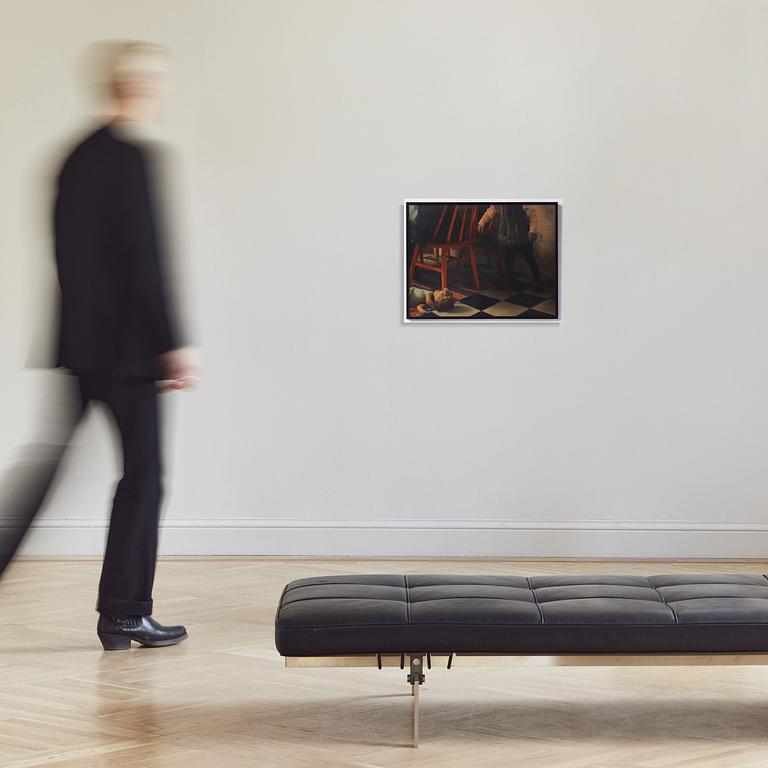Ola Billgren
"Målning"
Signed Ola Billgren and dated -68 -69 verso. Canvas 65 x 85 cm.
Provenance
Bukowski Auktioner, Stockholm, "Contemporary", auction no 599, 16 May 2017, cat. no 101.
Private Collection.
Exhibitions
Rooseum, Malmö, "Ola Billgren, A Retrospective", 14 May - 4 August.
Moderna Museet, Stockholm, "Ola Billgren, A Retrospective", 26 October - 8 December 1991.
Literature
Ola Billgren, "Ola Billgren. Målningar 1963-73", Galleri 69 Gothenburg, Sweden, 1973, illustrated full page pl. 68; Douglas Feuk och Lars Nittve (ed.), "Ola Billgren - En retrospektiv. Album vol.1", 1991, illustrated p. 41.
More information
Formulating the relationship between art and reality as well as the ability to capture the moment in a unity between the historical and the contemporary runs like a common thread through Ola Billgren's artistic practice. He has clearly defined the language of the image and tried to understand historically what role art and the artist has in their time. His visual art, especially that from the 1960s can seem more available in a very direct and almost cinematic way.
‘Målning’ from 1968-69, depicts a young woman sitting with her back to the beholder, a woman that likely has the main role in a larger reality that we can only imagine. A bright light shines into the room with new perspectives, which in one sense widens the beholder’s vision despite its finality. However, the actual action takes place closest to the viewer, where a doll thrown on the floor creates drama. The child on the right in the picture moves toward the mother in a hesitant forward movement. Is the woman alone in the room with the child? Is she waiting for someone or has someone just left the room? There is a suggestive atmosphere. The interpretation of reality has turned into doubt about what is reality.
Ola Billgren's interest in finding role models in other visual fields, such as film, brought with it a composition with slanted perspectives, "cut-in" details, close-ups that were “zoomed in” and taking over the main role in the image, which otherwise only suggests the presence of people. It also brought with it a narrative that was both laconic with a certain mass-media romanticism, but also evocatively inaccessible, in its motifs, which characterizes many of his paintings from this time. ‘Målning’ 1968-69 is an exceptional example and a very important work from that particular time.
Artist
Ola Billgren was born in 1940 in Copenhagen but based his career in Sweden. Billgren was self-taught, having only been trained by his parents Hans and Grete Billgren. Ola worked within the mediums of graphic art, watercolour, collage, photography, film, and scenography. He was also an author and culture critic. Known for his versatility, Billgren cultivated a relationship between art and reality in his work.
During the 1960s, he transitioned from abstract expressionism to photographic realism. Over time, his paintings evolved into a fusion of abstract and photorealistic styles, resulting in romantic landscapes where he examined the interplay of light and color. Forms dissolved, and colors were reduced to monochrome, single-colored surfaces that were richly worked and varied.
In the late 1980s, he returned to urban environments in large cityscapes, often painted from a high perspective but maintaining the impressionistic approach seen in his landscapes. Ola Billgren's influence on recent decades of art has been significant. His work is represented in institutions such as Musée National d'art Moderne Centre George Pompidou in Paris and Moderna Museet in Stockholm.





















































